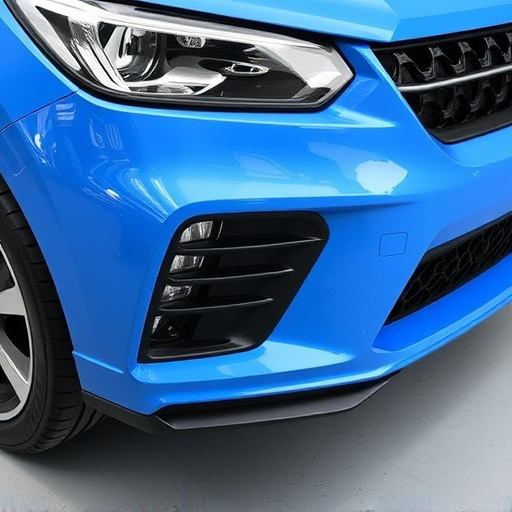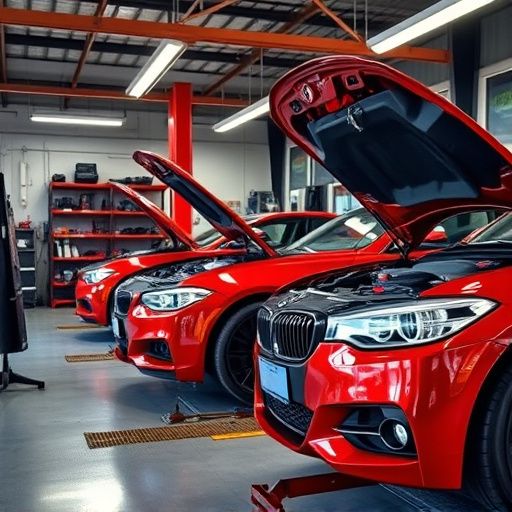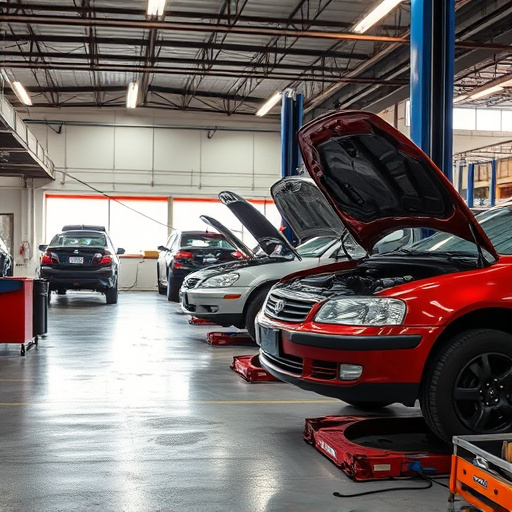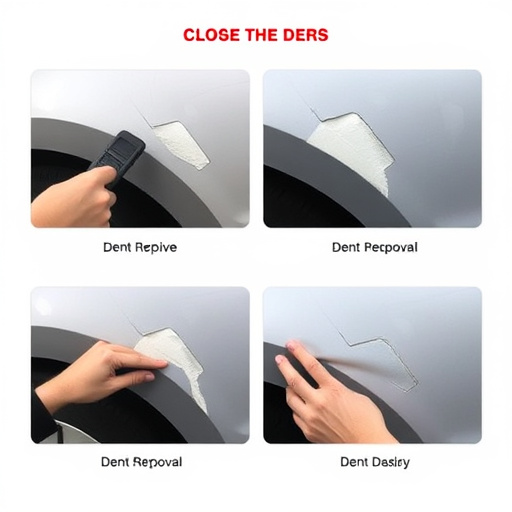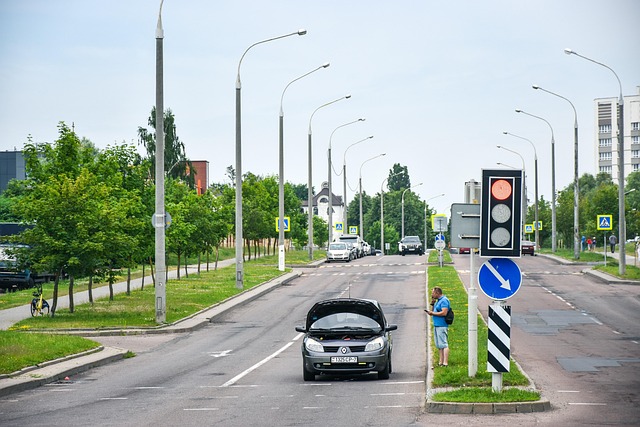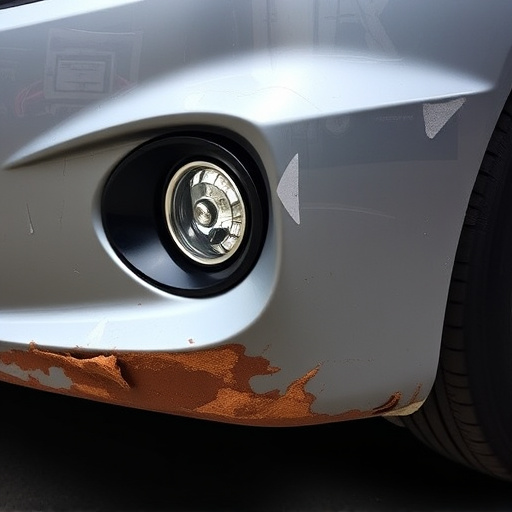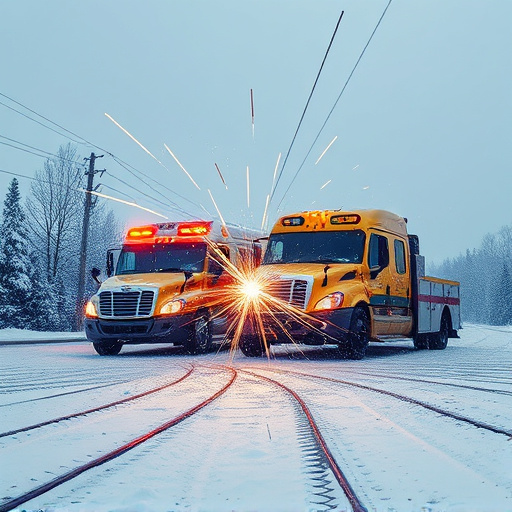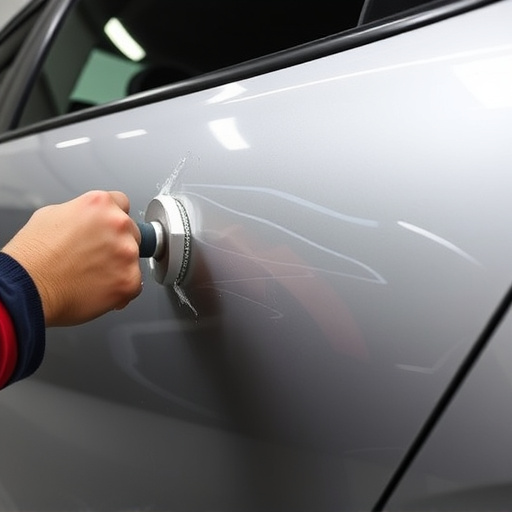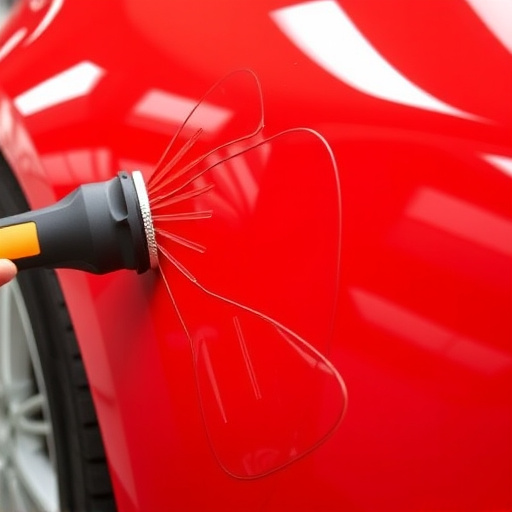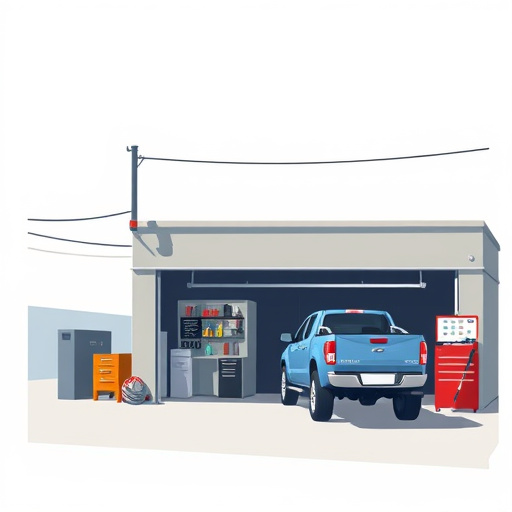Front bumper repair in rainy vs sunny conditions: Water hides damage, reducing visibility. Extreme temps & moisture impact repairs. Dry weather speeds up repairs for better results. Controlling environment crucial for durable, appealing paintless dent repairs.
“Unpredictable weather can significantly influence the front bumper repair process, from initial damage assessment to the final finish. In this article, we explore how varying conditions impact each stage of the repair journey. From rainy days hindering visual inspection to sunny repairs aiding in material strength analysis, every climate factor matters. We delve into the effects on replacement parts, paint adhesion, and overall aesthetics, offering insights to ensure optimal front bumper repair outcomes regardless of the weather.”
- Assessing Damage: Rainy Days vs Sunny Repair
- Material Impact: Weather's Role in Replacement Parts
- Dry or Wet: Optimizing Paint and Finishes
Assessing Damage: Rainy Days vs Sunny Repair

Assessing damage to a vehicle’s front bumper on a rainy day can present unique challenges compared to sunny conditions. Water accumulation and visibility issues often make it harder to accurately gauge the extent of the damage, especially subtle dents or scratches that might be obscured by droplets or puddles. In such scenarios, detailed inspection becomes crucial before initiating any front bumper repair.
On sunny days, the contrast between the damaged area and the surrounding surface is more pronounced, making it easier to pinpoint precisely where the harm has occurred. Whether it’s a simple scratch repair or a more complex car dent removal, clear visibility allows technicians in the collision center to plan and execute repairs with greater accuracy. This ensures that once the front bumper is repaired, it blends seamlessly with the rest of the vehicle, maintaining both its aesthetic appeal and structural integrity.
Material Impact: Weather's Role in Replacement Parts

Weather plays a significant role in the quality and durability of replacement parts used in front bumper repairs. Extreme temperatures, whether scorching heat or freezing cold, can affect the performance and longevity of various materials. For instance, metal components might expand or contract with temperature changes, potentially leading to misalignment during installation. This is particularly crucial when fitting new bumpers designed for precise fitting and structural integrity.
Additionally, wet weather conditions, such as rain or snow, can introduce moisture into the repair process, especially if tire services or car dent repairs are involved. Moisture can compromise the adhesion of bonding agents and coatings, impacting the overall strength and aesthetics of the front bumper repair. Therefore, ensuring proper drying time between applications is essential to avoid long-term issues, just as it’s vital for any fender bender repair to address weather-related challenges effectively.
Dry or Wet: Optimizing Paint and Finishes

When it comes to front bumper repair, the environmental conditions play a significant role, especially when dealing with paint and finishes. In dry weather, the repair process can be more straightforward as paints and primers dry faster, allowing for quicker completion and often better results. This is particularly beneficial for customers seeking efficient mercedes benz collision repair or general car bodywork services. The absence of moisture ensures that the surface is ready for the next stage without any potential delays caused by water-related issues.
Conversely, wet conditions can present challenges. In humid environments, the risk of paint not adhering properly to the bumper increases, which could lead to future issues like rust or peeling. For this reason, many professionals advocate for a controlled dry environment during paintless dent repair. Optimizing these conditions ensures that the front bumper repair is not only visually appealing but also durable, ensuring the vehicle’s exterior remains in top condition, even after the repair process.
Understanding how weather conditions influence each stage of a front bumper repair process is crucial for achieving optimal outcomes. From assessing damage under contrasting skies—rainy days versus sunny sessions—to selecting materials that weather various conditions, every step demands consideration. For seamless repairs, maintaining a dry environment during paint and finishes application is essential. By adhering to these guidelines, you can ensure a robust and long-lasting front bumper repair, enhancing vehicle aesthetics and safety for years to come.
